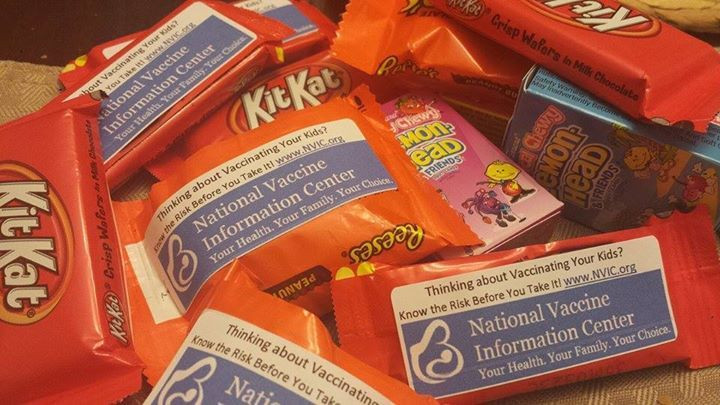Halloween Candy With A Message? Anti-Vaccine Parents Stick Propaganda On Wrappers

On one end of the Halloween candy spectrum are full-sized candy bars and the unsuspecting, if naïve, “Please take one” bowl. They define the spirit of the Halloween tradition: shamelessly shoving candy into our faces without guilt or second thought.
On the other end, however, you have books, pennies, fun-sized candy bars, and, well… this:

If the National Vaccine Information Center (NVIC) had any say in the matter, all kids would be receiving candy with stickers slapped on the back reminding parents of (what the NVIC sees as) the risks of vaccination. It seems like a hard sell, goading kids into not letting their parents get them vaccinated. But to the organization’s mind, its stance on vaccines is actually pretty middle-of-the-road.
“We support the availability of all preventive health care options, including vaccines, and the right of consumers to make educated, voluntary health care choices,” the NVIC states on its website.
To be clear, the educated health care choice is to get vaccinated. Mountains of research have verified that vaccinating kids promotes not only personal health but public health, too. The math is simple: The fewer people who carry the disease, the fewer people who can transmit the disease. The World Health Organization has found that vaccination greatly reduces disease, disability, death, and inequity worldwide.
A more appropriate sticker (if the candy must bear a disclaimer) would encourage copious amounts of flossing and teeth-brushing, or maybe going for a run, after ingesting all that sugar. After all, one estimate suggests the typical bag of Halloween candy contains 4,800 calories and three cups of sugar. Scary stuff indeed.
Published by Medicaldaily.com



























